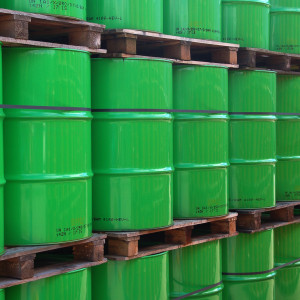Rising supply of US crude oil has the potential to transform the future of the US economy, but only if politicians let exports play an essential role in capturing the highest-value and most impactful growth.
Exports can finance further production expansions at home, driving gasoline price direction lower. The high quality of much new US crude oil production and the advantages of a sophisticated and underutilized refinery sector mean that a healthy trade in high-quality costly oil for low-quality cheaper oil run through job-creating refineries can continue to shrink the US budget deficit.
But beyond the oil sector and the market for related fuels, the removal of the crude oil export ban has the potential to lift the US economy and improve prospects for employment and value-added development across a range of sectors well into the coming decades.
Performance is built on efficiency
The US is no longer a country with an appreciable oil supply problem, but it is increasingly a country without a solution to its energy infrastructure mismatch problem.
While since 2007 oil and gas sector employment has grown by 40% in an economy barely managing one percent employment growth overall, the benefits will spread beyond the anticipated 460,000 jobs in the sector predicted by 2020 as production continues to climb. By 2025, with the crude oil and natural gas production expansion in the US only begun, ICF International estimates that the average household in the country will enjoy a more than $2,700 boost in annual disposable income.
But when that oil and the associated natural gas is stuck in the ground, or caught in regional markets without access to the infrastructure that brings it to places where it can be used for everything from advanced manufacturing and chemicals production to lower prices for transport and home heating, its economic impact is muted.
There is a misapprehension even among experienced analysts that high prices alone drive investment in energy infrastructure, but that is only for changes at the margin of existing infrastructure or for economies where energy production is the primary activity. For an Arabian Gulf exporter, high prices for crude oil mean more money to double down on the single thing that economy does better than others.
But US crude oil exports could mean not only an additional $70 billion in upstream investment in the country by 2020, but also the infrastructure to serve that production, with a multiplier effect on the broader economy. Allowing for crude oil exports lends an additional bump to this multiplier effect in the economy, according to the ICF report, and it forecasts annual US Gross Domestic Product could be $38.1 billion higher in 2020 if US crude exports are allowed.
In a complex economic environment where energy commodities are most often an input into other activities, a combination of scale and predictability is what encourages investment in energy infrastructure. Permitting, financing and operating a pipeline or a refinery in the US cannot be solely a matter of taking advantage of today’s high prices; the investment has to pay out over decades in a variety of price environments.
Financing the next generation of job-producing, economic-performance enhancing energy infrastructure in the US with the cash flow from exports is the best play the US has open to it today, and the fact that it is an unexpected gift doesn’t give politicians permission to ignore it.
Exporting crude oil makes sense for the US economy and for the US consumer, and has clear benefits beyond the fundamental American commitments to free trade and global security that have been central components of the country’s founding mission.

